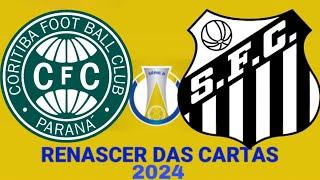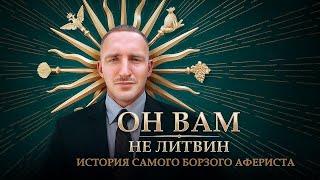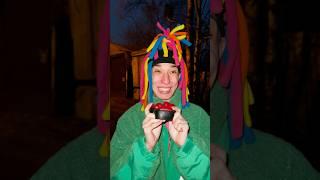
Georges Bizet & Fromental Halévy: Noé
Georges Bizet (1838-1875) & Fromental Halévy (1799-1862): Noé
Opera in three acts and four sets on a libretto by Hubert de Saint-Georges
Recreated in Compiègne Impérial Theater in 2004 after the 1881 German performances
Anne-Sophie Schmidt, Saraï
Jean-Philippe Courtis, Noé
Philippe Do, Ituriel
Matthieu Lecroart, Cham
Karen Vourc'h, Ebba
Mathias Vidal, Sem
Céline Victores-Benavente, Japhet
Paul Médioni, Eliacin
Cori Spezati Vocal Ensemble
Olivier Opdebeeck, director
Orchestre Français Alberic Magnard
Emmanuel Calef, conductor
Pierre Jourdan, artistic direction and stage director
Jean-Pierre Capeyron, sets and costumes
Jean-Pierre Tanto, choreography
Thierry Alexandre, lights
Pierre Jourdan & Patrice Monnet, film direction
Restored, upscaled and remastered in Altea Media Studios using careful use of Artificial Intelligence software and complete sound and picture remastering, under Michel Swierczewski's artistic direction.
Introduction
Acte I
1 Prière (Noé, Japhet, chœur) 'Quand après la nuit'
1bis Récit (Noé, Japhet) 'Plus de travaux, mes amis'
2 Chœur (Chœur) 'Quittons notre faucille'
2bis Scène (Noé, Japhet) 'Reste, Japhet'
3 Duo (Saraï, Noé) 'Toujours lui !'
Romance (Saraï) 'Un soir dans la forêt immense'
4 Chœur et scène (Japhet, Noé, Ebba, Sem, Eliacin, Chœur) 'Père ! les voici tous !'
5 Final (Noé, Cham, Saraï, Ebba, Japhet, Eliacin, Chœur) 'Quel est donc ce triste présage'
Acte II
Entr'acte
6 Romance (Ituriel) 'Je t’aime et ma brûlante ivresse'
7 Grande scène (Ituriel, Saraï, Chœur) 'Viens, frère'
8 Duo (Saraï, Ituriel) 'Où suis-je ?'
9 Chœur (Chœur) 'Nous sommes les rois'
9bis Scène (Ebba, Chœur) 'Infâmes ravisseurs'
10 Trio final (Ebba, Sem, Cham, Chœur) 'Ah ! par grâce !'
Acte III
Entr’acte
Tableau 1
11 Chœur dansé et scène (Saraï, Ituriel, Chœur) 'Dansez, dansez'
12 Ballet – Divertissement
A Marche des esclaves
B Ghazel
C Entrée des Bayadères
D Le Scarabée
E Danse des almées
F Ballabile – Final
13 Scènes (Saraï, Ituriel, Cham, Un Officier) 'N’hésitez plus'
14 Duo (Saraï, Cham) 'Je suis celle'
15 Scène et Terzetto (Saraï, Ebba, Japhet) 'Dieu ! qu’entends-je ?'
16 Final (Saraï, Ebba, Japhet, Ituriel, Cham, Noé, Chœur) 'On approche...'
17 Chant d’ivresse (Saraï, Ebba, Ituriel, Cham, Chœur) 'Versez, c’est la folie'
Tableau 2
Intermezzo: L’Arc-en-ciel
17 [sic] Hymne à Dieu (Saraï, Ebba, Japhet, Ituriel, Cham, Noé, Chœur) 'Dieu clément ! Ô Dieu tutélaire !'
Noé was initially commissioned to Fromental Halévy, Georges Bizet's father-in-law and mentor. However, he left it unfinished because he died before, in 1862. He made his son-in-law swear to finish it. Georges Bizet took more than ten years to continue writing the work, which he did not finish entirely either, since he also died in 1875, before being able to write the finale and the ballets. Finally, it was his wife and a musician who completed the score, reusing excerpts from other works by Georges Bizet.
However, since the manuscript has never reached us, it is very difficult to know who wrote which part and therefore to determine precisely the contributions of each. It is nevertheless possible to recognize certain parts according to the author's style: Act I takes up at certain moments themes from Georges Bizet's The Pearl Fishers, created in 1863, or a ballet which takes up the music of Djamileh, a one-act opera by the same composer, created in 1872.
The libretto, written by Henri Vernoy de Saint-Georges, which is rather fanciful, largely turns away from the original story of the biblical episode of the Flood and Noah's Ark.
Opera in three acts and four sets on a libretto by Hubert de Saint-Georges
Recreated in Compiègne Impérial Theater in 2004 after the 1881 German performances
Anne-Sophie Schmidt, Saraï
Jean-Philippe Courtis, Noé
Philippe Do, Ituriel
Matthieu Lecroart, Cham
Karen Vourc'h, Ebba
Mathias Vidal, Sem
Céline Victores-Benavente, Japhet
Paul Médioni, Eliacin
Cori Spezati Vocal Ensemble
Olivier Opdebeeck, director
Orchestre Français Alberic Magnard
Emmanuel Calef, conductor
Pierre Jourdan, artistic direction and stage director
Jean-Pierre Capeyron, sets and costumes
Jean-Pierre Tanto, choreography
Thierry Alexandre, lights
Pierre Jourdan & Patrice Monnet, film direction
Restored, upscaled and remastered in Altea Media Studios using careful use of Artificial Intelligence software and complete sound and picture remastering, under Michel Swierczewski's artistic direction.
Introduction
Acte I
1 Prière (Noé, Japhet, chœur) 'Quand après la nuit'
1bis Récit (Noé, Japhet) 'Plus de travaux, mes amis'
2 Chœur (Chœur) 'Quittons notre faucille'
2bis Scène (Noé, Japhet) 'Reste, Japhet'
3 Duo (Saraï, Noé) 'Toujours lui !'
Romance (Saraï) 'Un soir dans la forêt immense'
4 Chœur et scène (Japhet, Noé, Ebba, Sem, Eliacin, Chœur) 'Père ! les voici tous !'
5 Final (Noé, Cham, Saraï, Ebba, Japhet, Eliacin, Chœur) 'Quel est donc ce triste présage'
Acte II
Entr'acte
6 Romance (Ituriel) 'Je t’aime et ma brûlante ivresse'
7 Grande scène (Ituriel, Saraï, Chœur) 'Viens, frère'
8 Duo (Saraï, Ituriel) 'Où suis-je ?'
9 Chœur (Chœur) 'Nous sommes les rois'
9bis Scène (Ebba, Chœur) 'Infâmes ravisseurs'
10 Trio final (Ebba, Sem, Cham, Chœur) 'Ah ! par grâce !'
Acte III
Entr’acte
Tableau 1
11 Chœur dansé et scène (Saraï, Ituriel, Chœur) 'Dansez, dansez'
12 Ballet – Divertissement
A Marche des esclaves
B Ghazel
C Entrée des Bayadères
D Le Scarabée
E Danse des almées
F Ballabile – Final
13 Scènes (Saraï, Ituriel, Cham, Un Officier) 'N’hésitez plus'
14 Duo (Saraï, Cham) 'Je suis celle'
15 Scène et Terzetto (Saraï, Ebba, Japhet) 'Dieu ! qu’entends-je ?'
16 Final (Saraï, Ebba, Japhet, Ituriel, Cham, Noé, Chœur) 'On approche...'
17 Chant d’ivresse (Saraï, Ebba, Ituriel, Cham, Chœur) 'Versez, c’est la folie'
Tableau 2
Intermezzo: L’Arc-en-ciel
17 [sic] Hymne à Dieu (Saraï, Ebba, Japhet, Ituriel, Cham, Noé, Chœur) 'Dieu clément ! Ô Dieu tutélaire !'
Noé was initially commissioned to Fromental Halévy, Georges Bizet's father-in-law and mentor. However, he left it unfinished because he died before, in 1862. He made his son-in-law swear to finish it. Georges Bizet took more than ten years to continue writing the work, which he did not finish entirely either, since he also died in 1875, before being able to write the finale and the ballets. Finally, it was his wife and a musician who completed the score, reusing excerpts from other works by Georges Bizet.
However, since the manuscript has never reached us, it is very difficult to know who wrote which part and therefore to determine precisely the contributions of each. It is nevertheless possible to recognize certain parts according to the author's style: Act I takes up at certain moments themes from Georges Bizet's The Pearl Fishers, created in 1863, or a ballet which takes up the music of Djamileh, a one-act opera by the same composer, created in 1872.
The libretto, written by Henri Vernoy de Saint-Georges, which is rather fanciful, largely turns away from the original story of the biblical episode of the Flood and Noah's Ark.
Тэги:
#musique #music #opera #french #romantic #compiègne #imperial_theatre #bizet #halévyКомментарии:
Georges Bizet & Fromental Halévy: Noé
ALTEA MEDIA / I LOVE TV
Красим дерево в моделизме / Wood painting tutorial
Miniaturesdio
Bernard Edwards | Bass Groove
Music Circle
그리운 아버지/지나 송
최옥자의생각나들이
Previsão do jogo Coritiba X Santos
Renascer das Cartas
Genshin Impact Co-Op at 3AM...
JavaTheCup


























